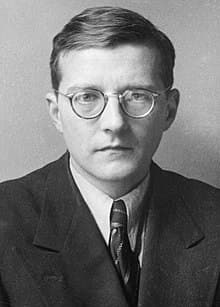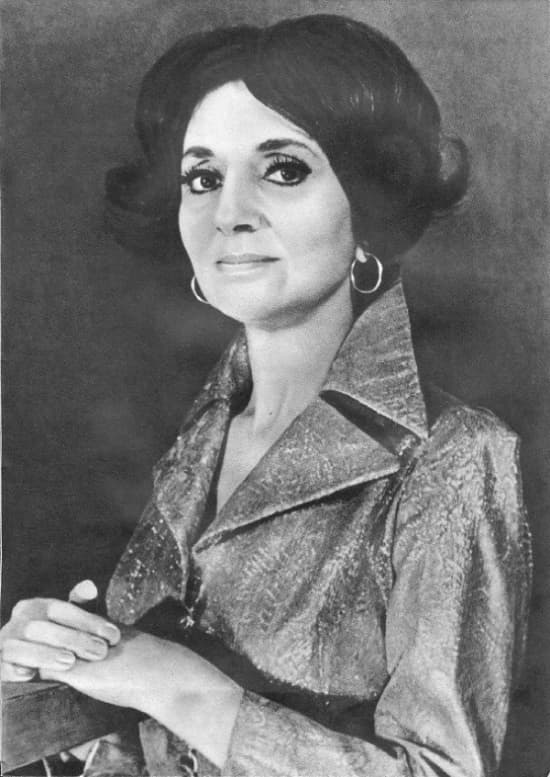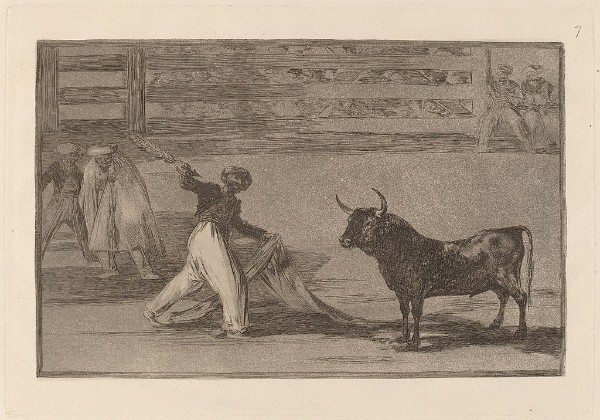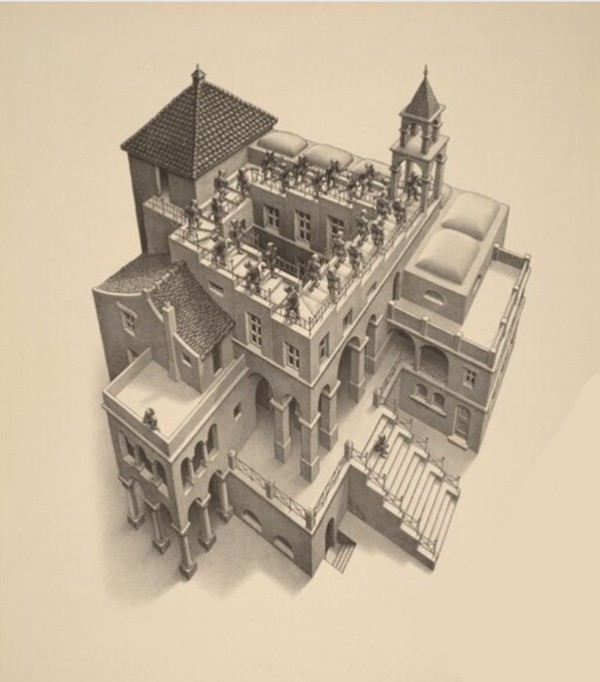Following the victory of Spain’s Nationalist party in the Spanish Civil War (1936–1939) and the rule of fascist Franciso Franco, the orphans of the dead Republican fighters were sent out of the country. The USSR, a support of the Republican side, took in the orphans.
The children and other exiles brought with them the songs of their homeland, and a friend heard a Spanish singer and a guitarist on a street corner. The friend, singer Zara Dolukhanova, a rare coloratura-mezzo, had given the 1955 world premiere of Dmitry Shostakovich’s From Jewish Folk Poetry, Op. 79, song cycle and hoped that he would create a Spanish cycle for her that would match that cycle’s intensity.

Dmitri Shostakovich, 1942

Zara Dolukhanova
Shostakovich chose instead to make straightforward piano accompaniments to the tunes, wishing to make the tunes themselves, rather than his arrangement, as the focus.
Dolukhanova, who had hoped to make this new song cycle the starting point for her new recital programme, didn’t like their simplicity, even though it placed her at the forefront of the music, and dropped it from her programming plans. Many other singers took up the cycle, recognizing the quality of the work.
Shostakovich got his texts from a book of Spanish poems that had been translated into Russian by Samuil Bolotin (poems 1, 3. 6) and Tatiana Sikorskaya (poems 2, 4, 5, and 6).
The first song, based on José Rizal’s Mi ultimos adios, is a farewell to Granada as the poet declares he ‘must part from you forever’.
Dimitri Shostakovich: Spanish Songs, Op. 100 – No. 1. Proschay, Grenada! (Farewell to Granada) (Olga Borodina, mezzo-soprano; Semjon Skigin, piano)
The rest of the songs come from the Spanish folk tradition. In Little Stars a lover comes to his sweetheart to teach songs as he plays on his guitar. The price is one kiss for each note, but the would-be teacher notes that, in the morning, she’s learned everything except the notes. He has the same problem when he seeks to teach her the names of the ‘numberless stars’, but again, she learns the lesson easily, but not the names of the stars. Such is the price teachers must pay – to teach the same lessons again and again.
Dimitri Shostakovich: Spanish Songs, Op. 100 – No. 2. Zviozdochki (Little Stars) (Olga Borodina, mezzo-soprano; Semjon Skigin, piano)
In The First Time I Met You, the poet describes receiving water from her hand – her eyes are dark and her braids smell of mint. Next, they are dancing a round dance and her ribbon is as blue as the sky as the tambourine beats.
Dimitri Shostakovich: Spanish Songs, Op. 100 – No. 3. Pervaya fstrecha (The First Time I Met You) (Olga Borodina, mezzo-soprano; Semjon Skigin, piano)
Another dance is the subject of Ronda. A round dance is at the door, and the couple joins them. He asks Ronda to pick a sprig of almond and give it to him as a token of her love.
Dimitri Shostakovich: Spanish Songs, Op. 100 – No. 4. Ronda (Olga Borodina, mezzo-soprano; Semjon Skigin, piano)
The fifth song, Black-Eyed Girl, compares a girl to her mother: eyes like the stars, a tall figure, and then asks why her mother gave her such beauty just to torment him since he will die of hopeless love unless she loves him.
Dimitri Shostakovich: Spanish Songs, Op. 100 – No. 5. Chernookaya (Black-Eyed Girl) (Olga Borodina, mezzo-soprano; Semjon Skigin, piano)
In the final song, Dream, our poet tells about a magical dream he had about bravely making his way to his beloved in his fishing boat, which travels through storms and waves, but only because he believes she loves him.
Dimitri Shostakovich: Spanish Songs, Op. 100 – No. 6. Son (Dream) (Olga Borodina, mezzo-soprano; Semjon Skigin, piano)
Despite lacking the qualities Zara Dolukhanova wanted, Shostakovich’s Spanish Songs are charming beauties. Although the texts are Spanish, Shostakovich has chosen songs that seem to have a kind of Russian fatalism in the text, serving two different national designs.

Olga Borodina
The recordings used here are by Olga Borodina, who had been a student of Zara Dolukhanova at the Gnessin Institute.
For more of the best in classical music, sign up for our E-Newsletter




